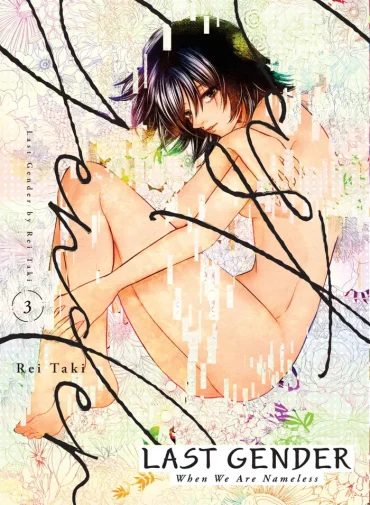Last Gender: When We Are Nameless Volume 3 Review
At the end of 2022, Kodansha began releasing Last Gender: When We Are Nameless under their Vertical imprint. A mere six months later the series has already reached its conclusion with the release of Volume 3. Has it reached a satisfying conclusion? Let’s find out!
Toward the end of Volume 2, we met Tetsuya who is working as a part-timer for BAR California. However, he’s already managed to put his job at risk by breaking into Yo’s personal room. Tetsuya reasons he was worried that customers were getting up to no good behind closed doors, but Yo isn’t willing to listen to his excuses. Luckily for Tetsuya, their conversation is interrupted by the arrival of new characters Kazumi and Yuji, who are in a relationship and eager to catch up with Yo.
The pair reveal that they have plans to become a family through Japan’s adoption system where they become legally recognised as parent and child. This system is widely used as a way of being registered as a family since same-sex couples are unable to get married in Japan, but Kazumi really wishes they could have a proper wedding ceremony. The two visited some venues but quickly gave up on the idea after the awkward stares they received from people around them.
Seeing how distraught the pair are, Tetsuya asks if they want to have a ceremony in BAR California. Here they’d be able to be themselves, while surrounded by friends and family who understand them. A bar in a back alley might not be the most beautiful of locations, but it would solve most of the issues. The pair readily agree and in the process have managed to save Tetsuya’s job, since Yo puts him in charge of the organisation, seeing as it was his idea.
The wedding takes up a big portion of the first half of this book, with the second half being dedicated to Yo’s backstory. This is something I (and I imagine other readers) have been eager to find out about since Volume 1, given Yo is constantly present throughout the series, but has remained an unsolved puzzle.
Leaving her backstory until the end of the series has worked out surprisingly well. As you may expect from the hints we’d previously been given, her story is not a happy one. There are indications she’s been through domestic abuse (physically and perhaps sexually, although that’s never explicitly stated) and even beyond that, she has had a lot to figure out about her own identity. Starting BAR California was supposed to help her figure that out; she hoped that meeting so many different people in a place welcoming to anyone from any walk of life would give her the answers she seeks.
While Yo’s story is very dark, I think having it here at the end contrasts well with the wedding storyline. The two stories side by side show the positives and negatives of not fitting into what society considers ‘normal’ and how people’s perceptions can change. As much as the majority of Last Gender has been quite negative or gloomy, there have still been moments that show us not everyone is a terrible human being. Sometimes just talking things through with someone will lead to a better understanding and acceptance. Sometimes there is no ill intent, it’s simply that people are ignorant of other sexualities or identities and that’s one of the themes the series leaves us with.
Back when I read Volume 1 of this series, I wasn’t convinced it was going to deliver anything resembling a recommendable read by the end, but to its credit, the manga has steadily improved since then. It feels like author Rei Taki got a better grasp of what worked and what didn’t, so they started to balance the content better and trimmed back all the explicit content we saw in Volume 1. This is still not a series everyone will enjoy; it’s a difficult read due to some of the subjects it tackles and each of these three books has numerous content warnings attached. However, if you’re someone who doesn’t mind that then this is certainly a thought-provoking read that gives us a glimpse into the state of LGBTQA+ rights in Japan and how the people there go about living their lives. It’s not what I would term entertainment, but it is consistently interesting without overstaying its welcome.
As previously mentioned, Last Gender Volume 3 comes to the West thanks to Kodansha via their Vertical imprint. Like Volume 2, this release was translated by Mishima Kitan who took over from the late Rose Padgett. Unfortunately, this means there were still no translation notes, which I still think is a great loss after Padgett’s detailed exploration of the terminology used in Volume 1. Otherwise, there’s no problem with the release to note.
Overall, Last Gender finishes far stronger than it began. This is a heavy read that many will find upsetting due to the topics discussed, but if you’ve made it this far you’ll be satisfied with Volume 3. With two main stories that contrast well with one another, it manages to walk a fine line of not being too gloomy but also being realistic in regard to its subject matter.
Our review copy from Kodansha was supplied by Turnaround Comics (Turnaround Publisher Services).


